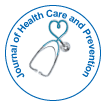开放获取期刊获得更多读者和引用
700 种期刊 和 15,000,000 名读者 每份期刊 获得 25,000 多名读者
抽象的
Overview of Coronavirus Illness with Diabetic Ketoacidosis In 2019
Dr. Mika Tarquinio
Background: A uncommon, potentially fatal fungal illness, mucormycosis, affects immunocompromised hosts. The most typical way that diabetes mellitus manifests is with a rhino-orbital-cerebral infection. A rebound of mucormycosis cases during the second wave of the pandemic, where poorly controlled diabetes mellitus was the most important risk factor in the affected population, leading to the discovery of an association with coronavirus illness 2019. The prognosis for rhino-orbital-cerebral mucormycosis is poor, and it has a high fatality rate. In this article, we present a
case of newly diagnosed diabetes mellitus complicated by concurrent coronavirus disease 2019, diabetic ketoacidosis,and rhinocerebral mucormycosis at presentation, describe the diagnostic and therapeutic challenges, and go over the interventions that ultimately produced a positive clinical response.
Present a case: We describe the case of a 13-year-old African American female patient who was previously healthy, had recently been diagnosed with diabetes mellitus, and was also infected with the coronavirus 2 that causes severe acute respiratory syndrome. The disease course was further complicated by rhinocerebral mucormycosis. She was diagnosed with diabetic ketoacidosis and warned about cerebral edoema since she had a fever, abnormal mental status, and Kussmaul respirations when she first appeared. Her ongoing fevers and chronically disturbed mental
status despite the treatment of her metabolic abnormalities raised suspicions of infectious cerebritis. This prompted assessment with serial head imaging, lumbar puncture, and start of broad empiric antibiotic course due to worry for infectious cerebritis. The diagnosis of rhinocerebral mucormycosis was ultimately validated by head imaging, blood metagenomics testing, and the detection of fungal deoxyribonucleic acid. The patient's condition demanded frontal lobe surgery, rigorous antifungal medication, and adjustment of the antimicrobial regimen due to electrolyte imbalances and alterations in the EKG. The patient was sent from the hospital in stable condition to an inpatient rehabilitation service for reconditioning following a lengthy hospital stay, despite these difficulties and the high fatality rate.
Conclusion: In order to start antifungal therapy and perform surgical debridement in a timely manner, it was crucial to have a high index of suspicion and early diagnosis of rhinocerebral mucormycosis.

 English
English  Spanish
Spanish  Russian
Russian  German
German  French
French  Japanese
Japanese  Portuguese
Portuguese  Hindi
Hindi